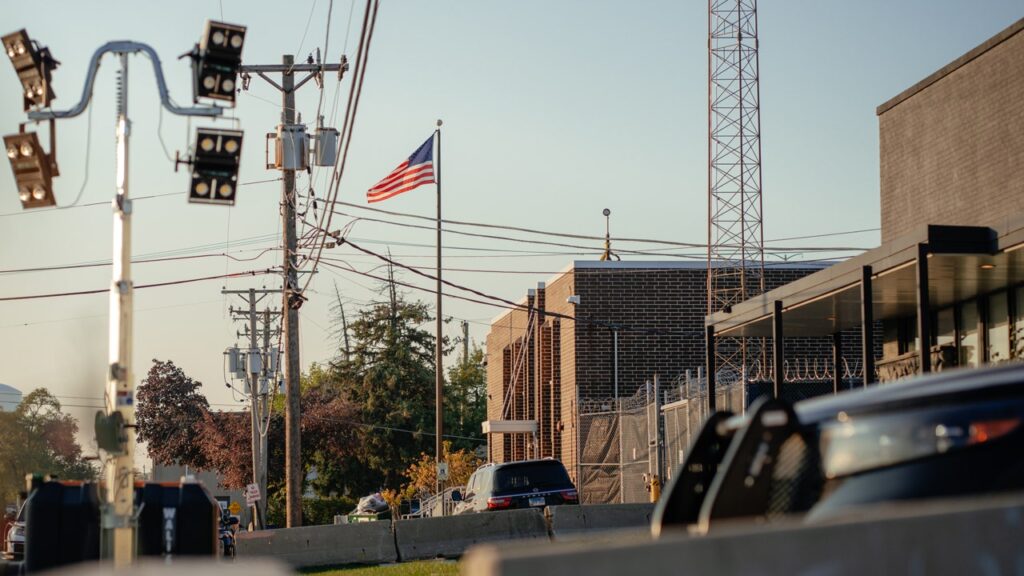A federal judge in Chicago has mandated the Department of Homeland Security (DHS) to release over 600 undocumented immigrants from the Broadview ICE detention center. The ruling, delivered by U.S. District Judge Jeffrey Cummings, stems from a class-action lawsuit that accuses federal agents of unlawfully detaining migrants under conditions deemed “unsafe and unsanitary.” The judge’s order marks a significant shift in handling immigration enforcement, raising questions about national security and the rights of immigrants in detention.
| Article Subheadings |
|---|
| 1) Overview of the Court Ruling |
| 2) Legal Context and Implications |
| 3) Conditions of Detention |
| 4) Reactions from Officials and Activists |
| 5) Next Steps and Compliance Measures |
Overview of the Court Ruling
In a landmark decision, Judge Jeffrey Cummings ruled that the DHS must release more than 600 detainees from the Broadview ICE facility by November 21. The ruling is a result of the class-action lawsuit known as Margarito Castañon Nava v. DHS, which claims that federal agents unlawfully detained hundreds of immigrants under a consent decree established to protect those not subject to mandatory detention. This controversial verdict raises the stakes in an ongoing national debate regarding U.S. immigration policy.
Legal Context and Implications
The lawsuit originates from a 2021 Biden-era policy aimed at reforming immigration enforcement practices that many argue were overly strict. These policies have since been challenged by the Trump administration’s “Operation Midway Blitz,” which aimed to expedite deportations, leading to mass arrests. Judge Cummings criticized the DHS for reversing course and signaled that the agency’s current practices violate agreements established by prior legal frameworks. The implications of this ruling could extend to detainment policies nationwide, setting a precedent for future cases.
Conditions of Detention
Judge Cummings didn’t just focus on the legality of the detentions; he also raised serious concerns about the conditions in which detainees were held. According to the judge, the detainees faced overcrowded areas and unsanitary conditions, often situated “next to overflowing toilets.” These conditions further complicate the narrative surrounding immigration enforcement, highlighting systemic issues within the current detention framework. The court’s criticism points to the DHS’s failure to comply with standards of care required under U.S. law.
Reactions from Officials and Activists
The ruling has elicited contrasting reactions. Activists, such as Michelle Garcia of the ACLU of Illinois, expressed optimism, viewing the decision as a step toward accountability for years of perceived unlawful arrests. “Today was a good day as the court ordered the immediate release of 13 people who have been wrongfully arrested and detained by federal immigration officials,” stated Garcia. Conversely, DHS officials expressed grave concerns about national security. Tricia McLaughlin, assistant secretary for Public Affairs at DHS, criticized the ruling as endangering American lives by releasing individuals deemed as high-risk without adequate supervision.
Next Steps and Compliance Measures
The judge has instructed the DHS to identify which detainees may continue to be held based on assessments of their potential public safety risks. The agency is required to submit a compliance report by November 24, detailing measures taken in response to the court’s order. This will not only impact the specific individuals involved but could redefine operational protocols across ICE facilities. As the situation unfolds, the balance between immigration enforcement and individual rights will remain a contentious issue in American society.
| No. | Key Points |
|---|---|
| 1 | Over 600 detainees are set to be released from the Broadview ICE facility by a federal court order. |
| 2 | The ruling is part of a class-action lawsuit challenging unlawful detentions under previous immigration policies. |
| 3 | Judge Cummings criticized the DHS for failing to maintain acceptable conditions for detainees. |
| 4 | Activists view the ruling as a significant victory for immigrant rights and accountability. |
| 5 | DHS officials have raised concerns about national security and the implications of releasing detainees. |
Summary
The recent ruling by Judge Jeffrey Cummings in Chicago has profound implications for immigration enforcement, igniting a spirited debate over the lawful treatment of migrants in detention. With significant repercussions for both the DHS and the affected individuals, this case underscores the ongoing challenges within U.S. immigration policy. As the legal landscape evolves, it remains vital to find a balance between public safety, individual rights, and humane treatment in immigration processes.
Frequently Asked Questions
Question: What prompted the court ruling regarding ICE detainees in Chicago?
The ruling was initiated by a class-action lawsuit claiming unlawful detentions by DHS that violated a consent decree designed to protect certain immigrant populations.
Question: Who is Jeffrey Cummings and what role did he play in this case?
Judge Jeffrey Cummings is a U.S. District Judge who ruled that over 600 detainees must be released from the Broadview ICE facility, citing violations of established laws and unsafe conditions.
Question: How did DHS respond to the ruling?
DHS officials denounced the court’s decision, claiming it undermines national security and raises risks by releasing individuals deemed as high public safety threats.
